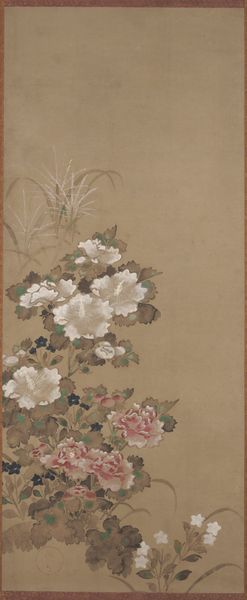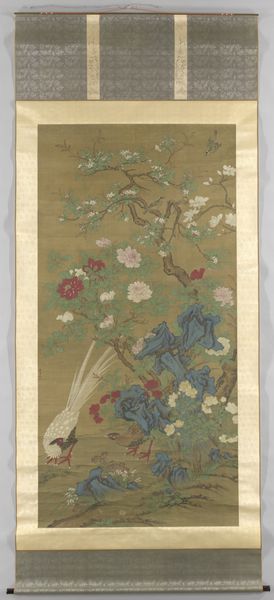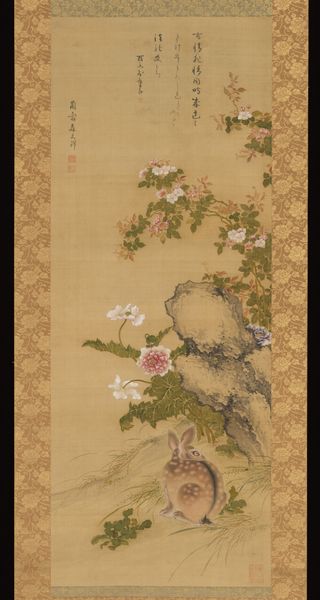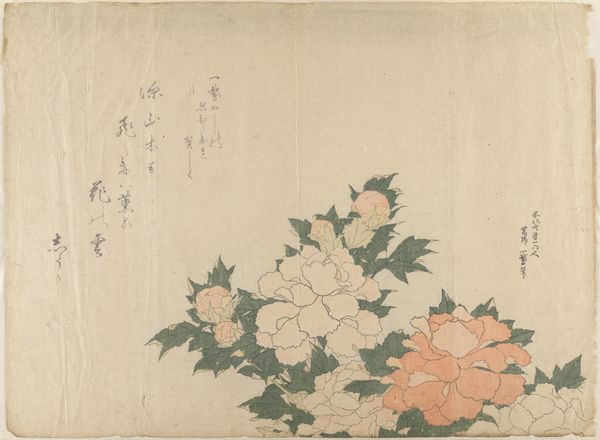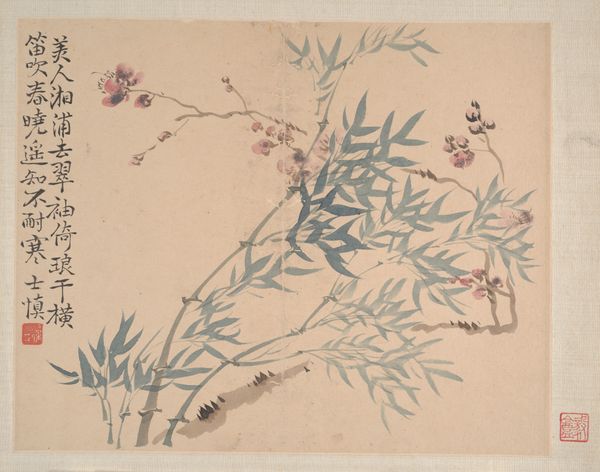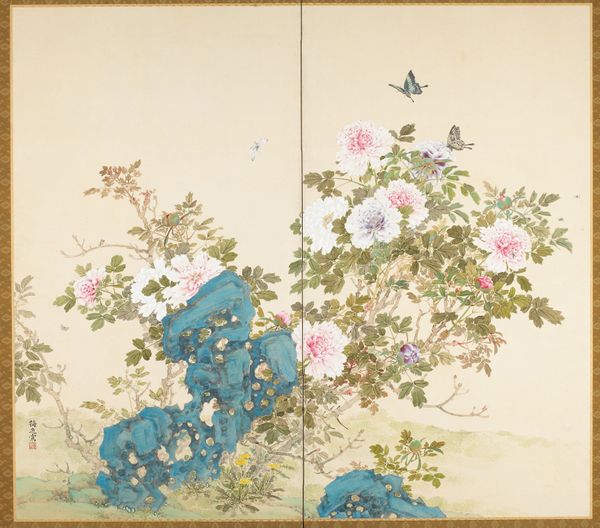
painting, ink
#
water colours
#
painting
#
asian-art
#
landscape
#
ink
#
watercolor
Dimensions: height 156 cm, width 93.5 cm, depth 8 cm, height 82 cm, width 146.5 cm
Copyright: Rijks Museum: Open Domain
Curator: The delicate handscroll before us, dating to about 1750, presents an intimate view into the artistic practices of Wu Mou, a figure celebrated for his mastery of flora and fauna depiction during the Qing Dynasty. Editor: It’s rather stunning. The way the ink seems to bleed into the paper… it gives the entire scene this almost ethereal, dreamy quality. You can practically smell the blossoms. Curator: Indeed. Titled "Peonies and Irises on a Rock," it's an exceptional example of ink and watercolor painting on paper, displaying both meticulous detail and an appreciation for the symbolic meaning imbued within specific botanical representations. Editor: Tell me more about those peonies, their arrangement strikes me as almost intentionally crafted. Was the placement simply aesthetic? Curator: Certainly not entirely. Peonies have long symbolized wealth and honor in Chinese culture. They often appear in art intended for a scholarly or courtly audience, reflecting an artist's hope of success for the patron. Editor: Fascinating. So, it's not just a pretty picture. Considering the artist’s material choice and process… the fluid washes of ink, juxtaposed against precise linework - it is worth noting how those elements converge, blurring the boundary between painting and something crafted. It begs the question of the division we arbitrarily establish between the fine arts and so-called craft traditions. Curator: I agree completely. Wu Mou's rendering engages the viewers, perhaps inviting the appreciation of the work itself in the social context in which is would have appeared to be the audience. Editor: Indeed! A handscroll is also very different to encountering art that permanently exists in museums, these may have lived in personal collections. It all affects how art gets circulated and discussed and what sort of social function the image fulfills! Curator: Precisely. Thinking about this artwork, I am reminded of how crucial is to consider not only its beauty but the underlying societal dynamics that influenced both its making and its meaning. Editor: Absolutely. Looking closer I find new levels and connections that would have not emerged on an initial viewing. A new way to consider process.
Comments
No comments
Be the first to comment and join the conversation on the ultimate creative platform.
